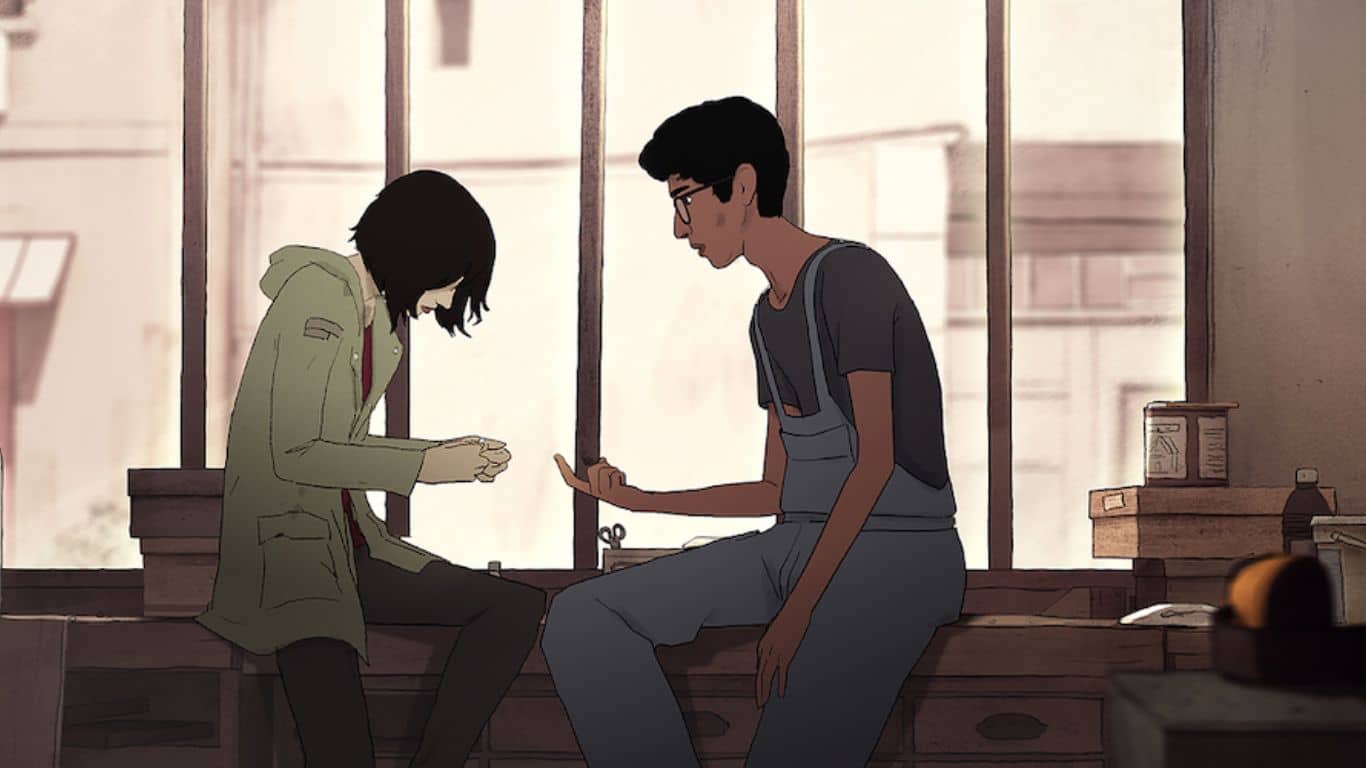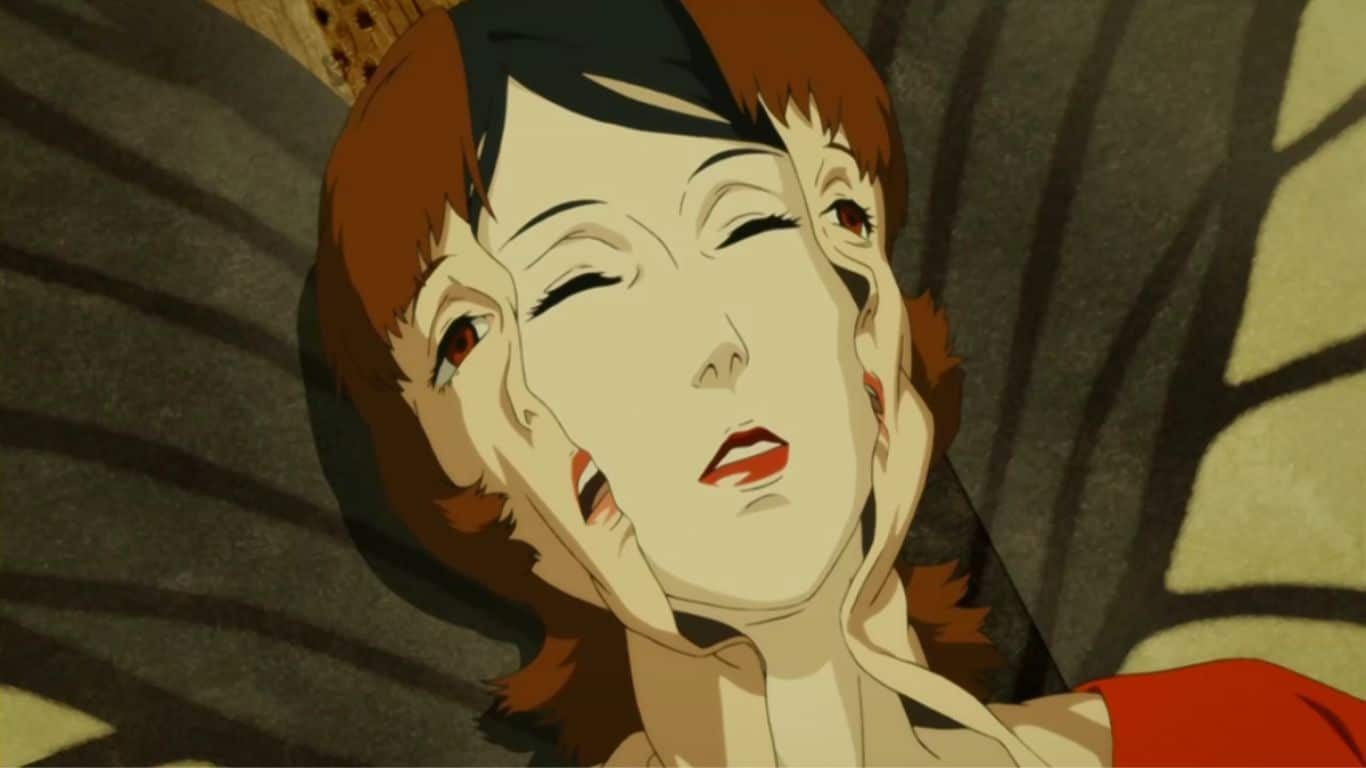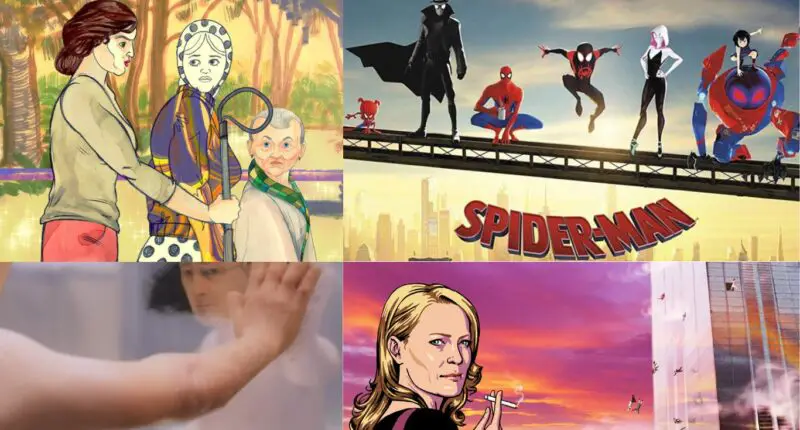Welcome to the world of experimental animated movies where imagination has no boundaries, and where the ordinary gets an extraordinary twist. This realm is about breaking rules, exploring the uncharted, and taking both the creators and viewers on a rollercoaster ride of emotions and ideas. We’ve put together a list of the 10 Best Experimental Animated Movies that stand as bold masterpieces in this genre. From deep human emotions to wild cosmic tales, each movie offers a unique perspective.
10 Best Experimental Animated Movies
“Waking Life” (2001)

Directed by Richard Linklater, the film utilizes rotoscoping, an animation technique that traces over live-action footage, to create a dreamlike visual experience. Its narrative structure, akin to a series of philosophical vignettes, transcends the traditional confines of storytelling, providing viewers with a deeply contemplative experience. What sets “Waking Life” apart is its successful blend of philosophical discourse with distinctive animation, transforming the film into a vibrant, thought-provoking exploration of existential questions. Its innovative use of animation in the service of profound themes heralded a new approach to animated filmmaking.
“Wolfwalkers” (2020)

The film takes us on a journey into the realm of Irish folklore. It is directed by Tomm Moore and Ross Stewart. What sets this film apart is its enchanting hand-drawn animation, a visual feast that harks back to a more traditional animation style, yet with a modern twist. The directors skillfully intertwine vibrant colors and fluid movements, bringing to life a mythical tale of friendship and transformation. Its innovative approach to narrative storytelling, its clever use of perspective, and its raw, sketchy aesthetic make it a standout in the genre. The film beautifully exemplifies how experimental animation can create a deeply immersive and emotionally charged cinematic experience.
“I Lost My Body” (2019)

It is a unique tour de force in the world of experimental animation. Directed by Jérémy Clapin, the film tells the story of a severed hand searching for its body, unfolding parallel narratives of the hand’s journey and the life of Naoufel, its original owner. The film’s innovative approach to storytelling is matched by its stunning visual artistry. Clapin’s deft use of visual metaphor and perspective sets the film apart, imbuing the story with emotional depth and a distinctive tactile quality. Its unique narrative perspective, combined with the rich and detailed animation style, makes “I Lost My Body” a truly groundbreaking film, redefining the possibilities of animated cinema.
“Spider-Man: Into the Spider-Verse” (2018)

The film stands as a game-changer in the world of animated films. Directed by Bob Persichetti, Peter Ramsey, and Rodney Rothman, the film introduces a vibrant, comic book-inspired aesthetic, unlike anything seen before. It blends various animation techniques, including traditional hand-drawn methods with state-of-the-art computer animation, resulting in a layered, visually stunning spectacle. The film is celebrated for its innovative use of the ‘multi-verse’ concept, bringing together different versions of Spider-Man in a single narrative. The fresh, dynamic animation style not only complements the story but also breathes new life into the well-known Spider-Man franchise. “Spider-Man: Into the Spider-Verse” is a triumph of both experimental animation and compelling storytelling.
“Cryptozoo” (2021)

Directed by Dash Shaw, the film brings the fantastical world of mythological creatures, or cryptids, to life in a stunningly hand-drawn style. It employs a blend of psychedelic and surreal artistry, making the movie a visual feast. The narrative, focused on the efforts to protect these cryptids, incorporates social commentary, adding depth to the visually dynamic journey. The film’s hand-drawn animation brings a unique texture and authenticity, reminiscent of classic comics but with a decidedly contemporary spin. “Cryptozoo” showcases the extraordinary possibilities of animation when paired with a daring and imaginative narrative.
“The Spine” (2009)

It is a remarkable experimental animated film that pushes the boundaries of visual storytelling. Directed by Chris Landreth, the film is a profound exploration of the human condition, seen through the lens of a deteriorating relationship. What sets “The Spine” apart is its bold use of symbolic, surreal imagery to represent emotional states and psychological trauma. Landreth’s innovative animation style – characterized by deformed figures and vivid colors – creates an intensely visceral experience, resonating with viewers long after the film ends. “The Spine” is a testament to the potential of animation as a medium for deep psychological exploration, and a perfect example of how visuals can enrich narrative depth.
“Anomalisa” (2015)

This stop-motion film breaks from traditional animation styles to delve into a profound exploration of human loneliness and disconnection. Its unique use of meticulously crafted puppets to portray the characters imbues the film with an uncanny realism that perfectly complements the existential themes. The film’s special aspect lies in its capacity to convey complex emotional and psychological experiences through the medium of stop-motion, turning the ordinary into something truly extraordinary. “Anomalisa” is a shining example of how animation can transcend its conventional bounds, providing a deeply human and intimate narrative.
“The Congress” (2013)

Directed by Ari Folman, the film is a unique blend of live-action and psychedelic animation. The story explores themes of identity, fame, and the implications of a digitalized world, offering a biting social commentary on the entertainment industry. The animation style of the film is fluid, dream-like, and richly detailed, creating a stark contrast with the live-action sequences and emphasizing the dichotomy between reality and the animated world. “The Congress” is a testament to the power of animation in conveying complex ideas, with its unique blend of reality and fantasy, and its bold commentary on societal issues.
“Paprika” (2006)

The film’s animation style is vibrant, fluid, and surreal, embodying the chaotic and fantastical nature of dreams. Kon’s mastery lies in seamlessly transitioning between multiple layers of reality and fantasy, creating a visually stunning and mind-bending cinematic experience. “Paprika” is a special film in its ability to explore the complexities of the human subconscious through the limitless possibilities of animation, leaving an indelible impact on the viewer.
“Fantasia” (1940)

It is a classic experimental animated film from Disney that has stood the test of time. Directed by a team including James Algar and Samuel Armstrong, “Fantasia” is a blend of animation and classical music that transcends traditional storytelling. It presents eight distinct segments, each paired with a piece of classical music, creating a symphony of visual storytelling. The film’s experimental nature is marked by its innovative combination of music and animation, setting a precedent for future animated films. Despite being over 80 years old, the inventive spirit of “Fantasia” still resonates today, making it a special testament to the limitless potential of animation in expanding the boundaries of narrative cinema.
Also Read:10 Best Anime Movies To Watch On Netflix


